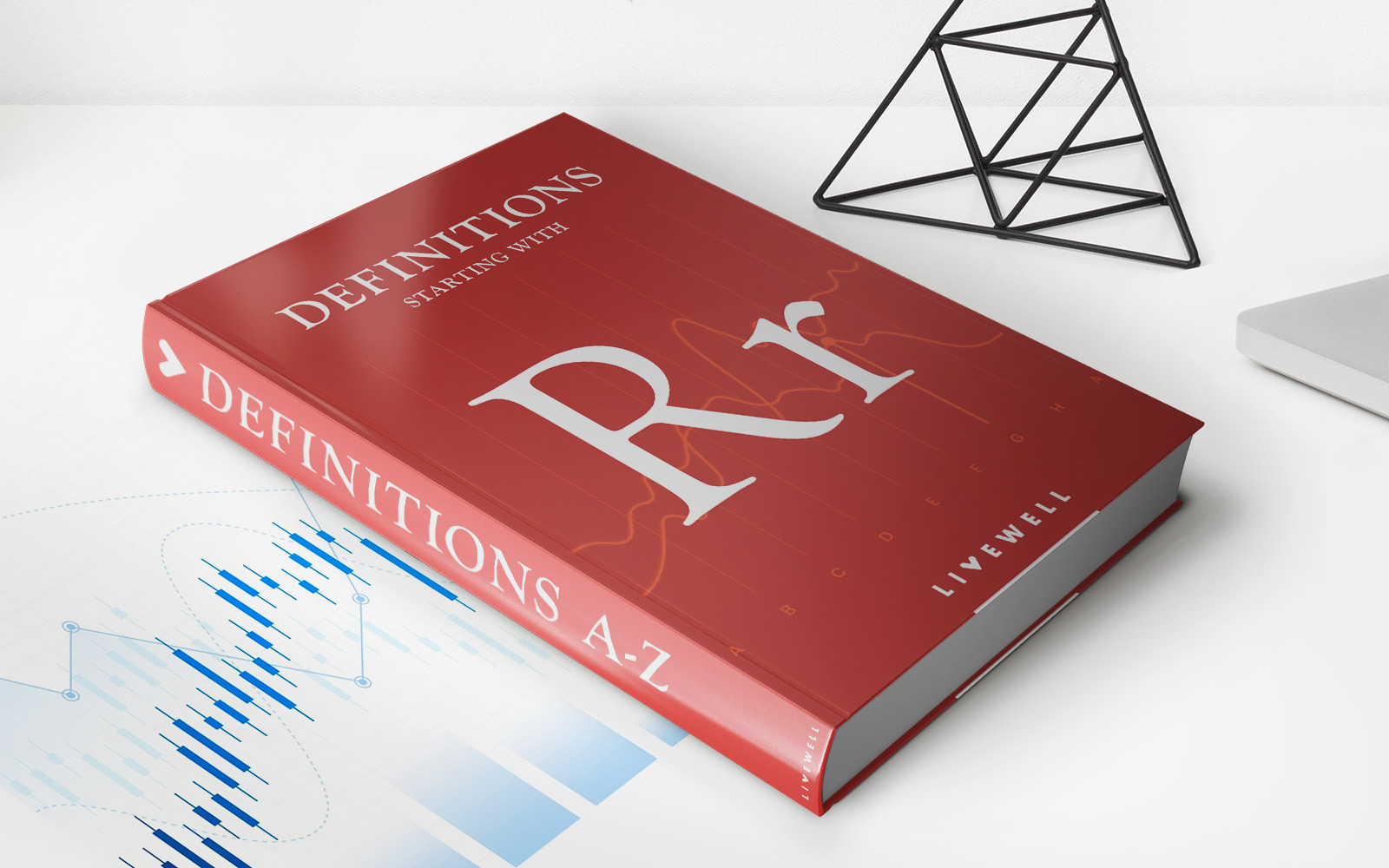

Finance
How To Report Roth Conversion On A Tax Return
Published: October 28, 2023
Learn how to report a Roth conversion on your tax return and maximize your savings. Get expert advice on finance and tax strategies.
(Many of the links in this article redirect to a specific reviewed product. Your purchase of these products through affiliate links helps to generate commission for LiveWell, at no extra cost. Learn more)
Table of Contents
- Introduction
- What is a Roth Conversion?
- Why Report Roth Conversions on a Tax Return?
- Gathering Necessary Information
- Reporting Roth Conversions on Form 8606
- Part I: Basis in Traditional IRAs for Previous Years
- Part II: Roth Contributions and Conversion Amounts for Current Year
- Part III: Required Minimum Distributions (RMDs)
- Completing Form 8606
- Additional Considerations for Reporting Roth Conversions
- Reporting Roth Conversions on Other Forms
- Filing Electronically or by Mail
- Conclusion
Introduction
Welcome to our comprehensive guide on how to report Roth conversions on a tax return. If you have recently completed a Roth conversion or are considering doing one, it is crucial to understand the reporting requirements to ensure compliance with the tax laws.
A Roth conversion involves transferring funds from a traditional Individual Retirement Account (IRA) or a 401(k) into a Roth IRA. Unlike traditional IRAs, Roth IRAs offer tax-free distributions in retirement, making them an attractive option for individuals seeking to minimize their tax burden later in life.
Reporting Roth conversions on your tax return is important for two primary reasons:
- Tax Liability: Roth conversions may have tax implications, including any applicable taxes on the converted amount. Accurately reporting these conversions will help you determine your tax liability and ensure compliance with the IRS.
- Record-Keeping: Reporting Roth conversions allows you to establish a record of your transactions for future reference. This can be useful in tracking your basis in the Roth IRA and determining if any future withdrawals are taxable.
As you navigate the process of reporting Roth conversions on your tax return, it is essential to gather all the necessary information related to the conversion. This includes details about the traditional IRA balance, any contributions made to the Roth IRA, and any other relevant information.
In this guide, we will walk you through the process of reporting your Roth conversions using Form 8606, which is specifically designed for this purpose. We will also cover additional considerations and alternative reporting methods that may apply in certain situations.
Whether you are a seasoned investor or new to the world of retirement accounts, understanding how to report Roth conversions on your tax return is vital for effective tax planning and compliance. So let’s delve into the details and demystify the process of reporting Roth conversions on your tax return.
What is a Roth Conversion?
A Roth conversion is a financial transaction where you move funds from a traditional Individual Retirement Account (IRA) or a 401(k) into a Roth IRA. The key difference between a traditional IRA and a Roth IRA lies in how contributions and distributions are taxed.
With a traditional IRA, contributions are typically tax-deductible, but distributions in retirement are subject to ordinary income tax. In contrast, contributions to a Roth IRA are made with after-tax dollars, meaning they are not tax-deductible. However, qualified distributions from a Roth IRA are tax-free.
By converting funds from a traditional IRA or 401(k) to a Roth IRA, you essentially “convert” the tax treatment of those funds. This means you will pay taxes on the converted amount in the year of the conversion, but any future qualified distributions from the Roth IRA will be tax-free.
It’s important to note that there are certain eligibility requirements and limitations when it comes to Roth conversions. For example, there are income limits that may restrict high-income earners from directly contributing to a Roth IRA. However, there are no income limits for Roth conversions, making them a viable option for individuals who exceed the income limits for direct Roth IRA contributions.
Additionally, it is crucial to consider the tax implications of a Roth conversion. When you convert funds from a traditional IRA to a Roth IRA, the amount converted is treated as taxable income in the year of the conversion. Therefore, you will owe taxes on the converted amount based on your ordinary income tax rate.
While the upfront tax liability may deter some individuals, the long-term benefits of a Roth IRA can outweigh the immediate tax cost. By paying taxes upfront and allowing the funds to grow tax-free within the Roth IRA, you can potentially enjoy tax-free distributions in retirement, providing a significant advantage over traditional IRAs.
Roth conversions can be an effective strategy for individuals looking to manage their tax liability in retirement, diversify their retirement income sources, or take advantage of potentially lower tax rates now. Understanding the process of reporting Roth conversions on your tax return is crucial to ensure compliance and maximize the benefits of this retirement planning strategy.
Why Report Roth Conversions on a Tax Return?
Reporting Roth conversions on your tax return is essential for several reasons. It not only ensures compliance with the Internal Revenue Service (IRS) but also helps you accurately track your tax liability and establish a record of your transactions. Here are the key reasons why you should report Roth conversions on your tax return:
- Tax Liability: Roth conversions may have tax implications. When you convert funds from a traditional IRA or 401(k) to a Roth IRA, the amount converted is treated as taxable income in the year of the conversion. By accurately reporting the conversion on your tax return, you ensure that you pay the appropriate taxes on the converted amount based on your ordinary income tax rate.
- Record-Keeping: Reporting Roth conversions allows you to establish a record of your transactions for future reference. This is particularly important for tracking your basis in the Roth IRA. The basis represents the amount of after-tax contributions and conversions made to the Roth IRA. Keeping accurate records helps in determining if any future withdrawals from the Roth IRA will be taxable. Reporting Roth conversions will also help you reconcile your records with any tax forms you receive from financial institutions.
- Form 8606 Requirement: Reporting Roth conversions is a specific requirement of the IRS. The IRS Form 8606, “Nondeductible IRAs,” is used to report Roth conversions and track your basis in traditional IRAs and Roth IRAs. It is crucial to accurately complete and include this form with your tax return to report your Roth conversions and ensure proper documentation of your tax-related transactions.
By reporting your Roth conversions on your tax return, you not only fulfill your legal obligations but also gain a clear understanding of your tax liability and maintain a comprehensive record of your financial activities. This can provide peace of mind and simplify future tax planning.
Furthermore, accurate reporting can help you avoid potential IRS audits or penalties that may arise from underreporting or failing to report your Roth conversions. By following the proper reporting procedures, you minimize the risk of errors and ensure that you are in line with the tax laws and regulations.
Ultimately, reporting Roth conversions on your tax return is a responsible and necessary step in managing your financial affairs, maximizing the benefits of a Roth IRA, and maintaining compliance with the IRS. Taking the time to understand the reporting requirements and accurately report your Roth conversions can benefit you in the long run and contribute to your overall financial well-being.
Gathering Necessary Information
Before you can accurately report Roth conversions on your tax return, it is crucial to gather all the necessary information related to the conversion. This includes details about your traditional IRA balance, any contributions made to the Roth IRA, and other relevant information. Here are the key pieces of information you need to gather:
- Traditional IRA Balance: Obtain the year-end balance of your traditional IRA from the previous year. This balance serves as the starting point for calculating the taxable portion of your Roth conversion.
- Roth IRA Contribution Details: If you have made any contributions to your Roth IRA during the tax year, gather information about the amount and the date of each contribution.
- Transaction History: Review the transaction history of your traditional IRA and identify any conversions made during the tax year. Note the date and amount converted for each transaction.
- Tax Forms: If you received any tax forms related to your traditional or Roth IRA, such as Forms 1099-R or 5498, gather them for reference. These forms provide important information about distributions, rollovers, conversions, and contributions made to your accounts.
- Supporting Documentation: Maintain supporting documentation for all your transactions, including receipts, statements, and any communication with financial institutions. These documents serve as evidence of your conversions and contributions and can be useful for record-keeping and verification purposes.
Having all the necessary information at hand will streamline the reporting process and help you accurately report your Roth conversions on your tax return.
It’s important to note that the information required for reporting Roth conversions may vary depending on your specific financial situation. For example, if you have multiple traditional IRAs or have made nondeductible contributions to a traditional IRA, additional calculations may be necessary to determine the taxable portion of your conversion.
If you are unsure about any aspect of the gathering process or have complex financial circumstances, consider consulting a tax professional or financial advisor who can provide guidance tailored to your situation.
By taking the time to gather and organize the necessary information, you can approach the reporting process with confidence, accurately report your Roth conversions, and ensure compliance with the IRS.
Reporting Roth Conversions on Form 8606
When it comes to reporting Roth conversions on your tax return, the IRS provides a specific form called Form 8606. This form is used to report nondeductible contributions to traditional IRAs, as well as to track the basis in traditional and Roth IRAs. Reporting Roth conversions on Form 8606 helps you properly account for the tax implications of the conversion. Here is a breakdown of how to report Roth conversions on Form 8606:
Part I: Basis in Traditional IRAs for Previous Years
In Part I of Form 8606, you will report any nondeductible contributions you made to traditional IRAs in prior tax years. This is important because the portion of your Roth conversion that represents basis (nondeductible contributions) is not subject to additional taxation.
If you have made any nondeductible contributions in prior years, you should have recorded them on previous year’s Form 8606. You will need to enter the total amount of nondeductible contributions from all previous years on the current year’s Form 8606, Part I.
Part II: Roth Contributions and Conversion Amounts for Current Year
In Part II of Form 8606, you will report any Roth IRA contributions made during the tax year, as well as the amount converted from traditional IRAs to Roth IRAs.
Enter the total amount of Roth IRA contributions made during the tax year on Line 1. If you made no contributions, you will enter zero.
Next, enter the amount of your Roth conversion on Line 2. This is the amount you converted from a traditional IRA to a Roth IRA during the tax year. This amount should only include the taxable portion of the conversion, as any basis (nondeductible contributions) should have been reported in Part I.
On Line 6, subtract any basis from Part I from the total amount of your Roth conversion for the current year. This will give you the taxable portion of the conversion that needs to be included in your taxable income.
Part III: Required Minimum Distributions (RMDs)
If you are aged 72 or older and have reached the age for required minimum distributions (RMDs), you will need to complete Part III of Form 8606. This section is used to determine any taxable portion of your RMDs.
If you took an RMD from a traditional IRA during the tax year, you will need to indicate the amount on Line 16 of Part III. This amount will be used to calculate the taxable portion of your RMD.
Completing the Form 8606
Once you have entered the necessary information in each part of Form 8606, you will need to total the tax-free and taxable amounts and carry them to the appropriate sections of your tax return.
Keep in mind that Form 8606 can be complex, especially if you have made nondeductible contributions in previous years or if you have multiple traditional IRAs. It’s important to double-check your entries and consider seeking guidance from a tax professional or financial advisor to ensure accurate reporting.
By completing Form 8606 properly, you can account for your Roth conversions and contributions, calculate the taxable portion accurately, and successfully report your Roth conversions on your tax return.
Part I: Basis in Traditional IRAs for Previous Years
In Part I of IRS Form 8606, you will report the basis in your traditional IRAs for previous tax years. The basis represents any nondeductible contributions you made to your traditional IRA in the past. Reporting your basis is essential for properly determining the taxable portion of your Roth conversion.
If you have made nondeductible contributions to your traditional IRA in previous years, you should have filed Form 8606 for each year that you made such contributions. The total basis from all previous years should be carried forward to the current year’s Form 8606, Part I.
To report your basis in traditional IRAs for previous years on Form 8606, follow these steps:
- Enter the total basis from previous years: On Line 1 of Part I, enter the total amount of nondeductible contributions you have made to your traditional IRA in previous years. This information should be carried forward from the previous year’s Form 8606, Line 14.
- Calculate the basis ratio: Divide the basis amount from Line 1 by the fair market value (FMV) of your traditional IRAs at the end of the previous year. This ratio will be used to determine the taxable portion of your Roth conversion in the current year.
- Keep track of the basis: It is crucial to maintain accurate records of your nondeductible contributions and the corresponding basis over time. This will help you determine the tax-free portion of any future distributions from your Roth IRA and avoid being taxed twice on the same funds.
Understanding the basis in your traditional IRA is important because it represents the amount that is already considered after-tax. When you convert funds from a traditional IRA to a Roth IRA, the basis is not subject to additional taxation. However, any amount converted beyond the basis will be included in your taxable income for the year.
By accurately reporting your basis on Form 8606, you ensure that the correct amount is considered tax-free during your Roth conversion. This helps you avoid paying unnecessary taxes on funds that have already been taxed.
Remember to consult the instructions provided by the IRS for Form 8606 to ensure you are completing Part I correctly. If you have complex financial circumstances or are unsure about any aspect of reporting your basis, it is advisable to seek guidance from a tax professional or financial advisor.
By understanding and correctly reporting the basis in your traditional IRAs for previous tax years, you can navigate the reporting process with confidence and ensure accurate taxation of your Roth conversion.
Part II: Roth Contributions and Conversion Amounts for Current Year
In Part II of IRS Form 8606, you will report the Roth IRA contributions and conversion amounts made during the current tax year. This section is crucial for accurately determining the taxable portion of your Roth conversions.
When completing Part II, follow these steps to report your Roth contributions and conversion amounts:
- Roth IRA Contributions: On Line 1, enter the total amount of Roth IRA contributions made during the tax year. This includes any regular contributions you made to your Roth IRA with after-tax dollars. If you did not make any contributions during the year, enter zero on this line.
- Roth Conversion Amount: On Line 2, enter the total amount you converted from traditional IRAs to Roth IRAs during the tax year. This amount should only include the taxable portion of the conversion. If you did not make any Roth conversions during the year, enter zero on this line.
- Calculate the Taxable Conversion Amount: On Line 6, subtract any basis in your traditional IRAs from Part I of Form 8606. This will give you the taxable portion of your conversion, which represents the amount that will be included in your taxable income for the year.
It’s important to note that only the portion of your Roth conversion that exceeds the basis in your traditional IRAs is taxable. The basis represents the after-tax contributions you made to the traditional IRAs, which have already been taxed in prior years.
By accurately reporting your Roth contributions and conversion amounts in Part II, you ensure that the appropriate taxable portion is reported on your tax return. Proper reporting helps you avoid any potential underreporting or overreporting of income, ensuring compliance with tax laws and regulations.
Keep in mind that if you have made nondeductible contributions to your traditional IRAs in previous years, you should have reported them in Part I of Form 8606. The basis from Part I can be used to calculate the taxable portion of your Roth conversion in the current year.
Accuracy is essential when reporting Roth contributions and conversion amounts, as any errors or omissions could result in incorrect taxation. If you have complex financial circumstances or are unsure about any aspect of reporting, consider consulting a tax professional or financial advisor for guidance.
By understanding and correctly reporting your Roth contributions and conversion amounts on Form 8606, you can ensure accurate taxation and compliance with IRS regulations.
Part III: Required Minimum Distributions (RMDs)
In Part III of IRS Form 8606, you will address any required minimum distributions (RMDs) from your traditional IRA that you have taken during the tax year. This section helps determine the taxable portion of your RMDs and ensures compliance with IRS regulations.
To accurately report RMDs on Form 8606, follow these steps:
- Enter the RMD amount: On Line 16 of Part III, enter the total amount of the RMDs you have taken from your traditional IRA during the tax year. This amount represents the portion of your IRA balance that the IRS requires you to withdraw and report as taxable income.
- Calculate the taxable portion: Use the value from Line 16 to determine the taxable portion of your RMD. If you have a basis in your traditional IRA from Part I of Form 8606, subtract it from the RMD amount to calculate the taxable portion.
- Report the taxable amount on your tax return: Carry the taxable portion of your RMD to the appropriate section of your tax return, such as Form 1040. This ensures that the correct amount is included in your taxable income for the year.
It’s crucial to note that RMDs are generally required once you reach the age of 72 (or 70 ½ for those born before July 1, 1949). Failing to take the RMD or underreporting it can result in penalties from the IRS.
Reporting your RMDs accurately on Form 8606 is important for calculating the taxable portion and ensuring compliance with IRS regulations. By properly reporting your RMDs, you can avoid unnecessary penalties and properly account for your taxable income each year.
If you have multiple traditional IRAs and are subject to RMDs, it’s essential to include the total RMD amount from all your traditional IRAs on Line 16 of Part III.
Understanding and correctly reporting your RMDs on Form 8606 helps you maintain compliance with IRS regulations and accurately report your taxable income for the year.
If you have complex financial circumstances or are unsure about any aspect of reporting your RMDs, it is advisable to seek guidance from a tax professional or financial advisor.
Completing Form 8606
Completing IRS Form 8606 is crucial for accurately reporting your Roth conversions, basis in traditional IRAs, and required minimum distributions (RMDs). Here are the key steps to take when completing Form 8606:
- Part I: Basis in Traditional IRAs for Previous Years: In this section, enter the total basis from previous years. This represents any nondeductible contributions made to your traditional IRAs in prior tax years. Calculate the basis ratio by dividing the basis amount by the fair market value (FMV) of your traditional IRAs at the end of the previous year.
- Part II: Roth Contributions and Conversion Amounts for Current Year: Report the total amount of Roth IRA contributions made during the tax year on Line 1. Enter the taxable portion of any Roth conversions on Line 2. Calculate the taxable amount by subtracting any basis from Part I from the conversion amount on Line 2.
- Part III: Required Minimum Distributions (RMDs): If you are subject to RMDs, enter the amount of RMDs taken from your traditional IRA on Line 16. Calculate the taxable portion by subtracting any basis from Part I, if applicable.
- Total the tax-free and taxable amounts: Add up the tax-free amounts from Part II and any taxable amounts from Parts II and III. These totals will be carried to the appropriate sections of your tax return.
- Report on your tax return: Carry the tax-free and taxable amounts from Form 8606 to the appropriate sections of your tax return, such as Form 1040.
Completing Form 8606 accurately is crucial for properly reporting your Roth conversions, basis, and RMDs, as well as determining the taxable portion of your income. It ensures compliance with IRS regulations and helps you avoid potential penalties or audit triggers.
Make sure to carefully follow the instructions provided by the IRS and double-check your entries for accuracy. If you have any doubts or complex financial circumstances, seeking guidance from a tax professional or financial advisor can provide additional support and ensure a correct and complete Form 8606 submission.
By effectively completing Form 8606, you can properly report your Roth conversions, basis, and RMDs, and seamlessly integrate these figures into your overall tax return, ultimately contributing to your compliant and accurate tax filing.
Additional Considerations for Reporting Roth Conversions
While Form 8606 provides the primary mechanism for reporting Roth conversions on your tax return, there are a few additional considerations to keep in mind to ensure accurate reporting and compliance. Here are some important factors to consider:
- Keep thorough records: Maintaining detailed records of your Roth conversions is crucial. This includes documenting the dates, amounts, and sources of funds for each conversion. Additionally, hold on to any supporting documentation, such as account statements, Form 1099-R, or other tax-related documents. These records can be invaluable in case of an IRS audit or when reconciling information with financial institutions.
- Consider Roth conversion ordering rules: If you have multiple traditional IRAs or have made nondeductible contributions in the past, it’s essential to understand the ordering rules for Roth conversions. The IRS applies specific rules to determine which funds are deemed to be converted first. This can impact the taxable portion of your conversion and the basis calculation. Consulting with a tax professional can help you navigate these complex rules.
- Review state tax implications: While reporting Roth conversions on your federal tax return is important, don’t forget to consider any state tax implications. Individual states often have their own tax laws and treatment of Roth conversions. Ensure that you are aware of any state reporting requirements or potential tax liabilities that may arise.
- Consider the “backdoor” Roth IRA strategy: If you exceed the income limits for direct Roth IRA contributions, you can consider the “backdoor” Roth IRA strategy. This entails making nondeductible contributions to a traditional IRA and then converting those funds to a Roth IRA. Reporting this strategy on your tax return may require additional forms or documentation, such as Form 8606, to accurately report the basis and conversion amounts.
- Be mindful of tax implications: Roth conversions can have significant tax implications, including increasing your taxable income in the year of the conversion. Depending on your income level and the size of the conversion, increased income may impact your eligibility for certain tax deductions or credits. It’s important to consider the potential tax consequences and consult with a tax professional to understand the long-term effects on your tax situation.
By keeping these additional considerations in mind when reporting Roth conversions, you can ensure accurate reporting, compliance, and effective tax planning. It’s always a good practice to seek guidance from a tax professional or financial advisor who can provide personalized advice based on your specific circumstances and financial goals.
Reporting Roth Conversions on Other Forms
While Form 8606 is the primary form used to report Roth conversions, there may be situations where you need to report Roth conversions on other tax forms as well. Here are a few scenarios where reporting on other forms may be necessary:
- Form 1040, Schedule 1: If you have made a Roth conversion during the tax year, you will likely need to report it on your Form 1040. On Line 8 of Schedule 1, “Additional Income and Adjustments to Income,” report the amount of the taxable portion of your Roth conversion.
- Form 1040, Schedule 2: Depending on your specific circumstances, you may need to complete additional forms. For example, if you owe self-employment tax or need to report additional taxes, you may need to file Schedule 2, “Additional Taxes,” and report your Roth conversion in the appropriate section.
- Form 1040, Schedule D: If you have converted assets other than cash, such as stocks or real estate, you may need to report the conversion on Schedule D, “Capital Gains and Losses.” Enter the relevant details, including the description of the property and the basis, to accurately report any gain or loss resulting from the conversion.
- Forms related to IRA distributions: In some cases, you may receive tax forms, such as Form 1099-R, “Distributions From Pensions, Annuities, Retirement or Profit-Sharing Plans, IRAs, Insurance Contracts, etc.” If you received a distribution from your traditional IRA as part of a Roth conversion, the issuer or the custodian of the account may issue this form. Report the distribution on the appropriate sections of your tax return and ensure that the conversion is correctly accounted for.
It’s important to review the specific instructions for each form and consult with a tax professional or financial advisor if you are unsure about reporting requirements. This will help ensure that you accurately report your Roth conversions on the appropriate forms, avoiding any reporting errors or omissions.
Keep in mind that the forms mentioned here are just a few examples, and the forms you need to file may vary based on your individual circumstances and the complexity of your financial situation.
By understanding and correctly reporting your Roth conversions on the applicable tax forms, you can ensure compliance with IRS regulations and accurately reflect your tax-related activities for the tax year.
Filing Electronically or by Mail
When it comes to filing your tax return, you have the option to file electronically or by traditional mail. Both methods have their advantages and considerations. Here’s an overview of the filing options:
1. Filing Electronically:
- Convenience: Electronic filing, also known as e-filing, offers convenience as you can submit your tax return from the comfort of your own home. This method saves time and reduces the risk of errors commonly associated with manual paper filing.
- Quick Processing: E-filing generally allows for faster processing and quicker refunds compared to traditional mail filing. The IRS processes electronically filed returns more efficiently.
- Accuracy Check: When filing electronically, tax software often includes built-in error-checking mechanisms, minimizing the chance of mistakes. These programs catch common errors, such as missing information or incorrect calculations, ensuring that your return is as accurate as possible.
- Confirmation and Status Updates: With e-filing, you receive immediate confirmation that your return has been received by the IRS. Additionally, you can track the status of your return and refund through the IRS website or the tax software you used.
2. Filing by Mail:
- Required Documentation: When submitting your tax return by mail, it is crucial to ensure that all necessary forms and attachments, including Form 8606, are properly included. Double-check that you have signed and dated your return before sending it.
- Proof of Mailing: When mailing your tax return, consider using certified mail with a return receipt or a reputable courier service. This provides proof of mailing and ensures that your documents are safely delivered to the IRS.
- Potential Delays: Mailed returns generally take longer to process compared to e-filed returns. The IRS manually reviews paper returns, which can result in additional processing time.
- Payment Options: If you owe taxes, the IRS provides various payment methods for mail filers, including checks or money orders. Ensure that your payment is included with your return and follows the IRS guidelines.
Before choosing your filing method, consider your personal preferences, the complexity of your tax return, and any applicable deadlines. Regardless of how you choose to file, it’s important to double-check your forms and supporting documentation, including Form 8606, for accuracy and completeness.
Remember, if you’re unsure about any aspect of filing your tax return, consulting with a tax professional or using reputable tax software can provide guidance and peace of mind, ensuring that your return is correctly filed.
Conclusion
Reporting Roth conversions on your tax return is a crucial step in properly accounting for these transactions, ensuring compliance with IRS regulations, and managing your tax obligations effectively. By following the necessary steps and accurately reporting your Roth conversions on Form 8606, you can navigate the reporting process with confidence and achieve a clear understanding of your tax liability.
We started by understanding what a Roth conversion entails and why it is important to report these conversions on your tax return. We then explored the gathering of necessary information, including details about your traditional IRA balance and Roth IRA contributions, to ensure accurate reporting.
Next, we delved into the specifics of reporting Roth conversions on Form 8606, including reporting the basis in traditional IRAs, Roth contributions, and conversion amounts. We also emphasized the importance of accurately completing this form to calculate the taxable portion of your conversions.
Furthermore, we discussed additional considerations for reporting Roth conversions, such as maintaining thorough records, considering state tax implications, and understanding tax strategies like the “backdoor” Roth IRA approach.
We also highlighted the potential need to report Roth conversions on other tax forms, alongside Form 8606, depending on your circumstances. It is crucial to be aware of the appropriate forms and correctly report your conversions to ensure accurate and compliant tax filing.
Lastly, we explored the options for filing your tax return electronically or by mail, outlining the benefits and considerations of each method. Deciding which method to use depends on your personal preferences, convenience, and the complexity of your tax return.
Remember, if you have any uncertainties or complexities surrounding reporting Roth conversions, it is strongly recommended to seek guidance from a tax professional or financial advisor who can provide personalized assistance based on your specific needs.
In conclusion, by understanding the process of reporting Roth conversions, gathering the necessary information, accurately completing Form 8606, and considering additional factors, you can successfully report your Roth conversions on your tax return. This ensures compliance with IRS regulations and allows you to effectively manage your tax obligations, contributing to your overall financial well-being and peace of mind.














